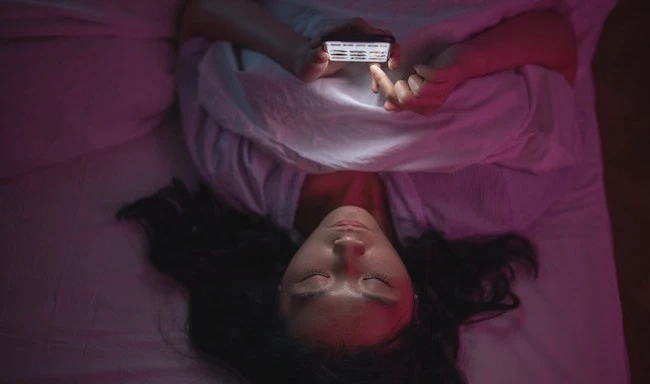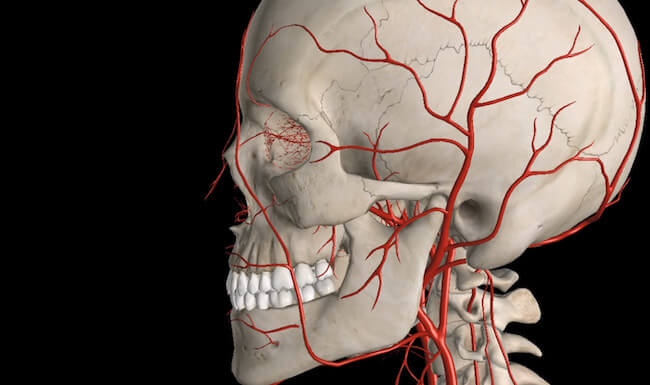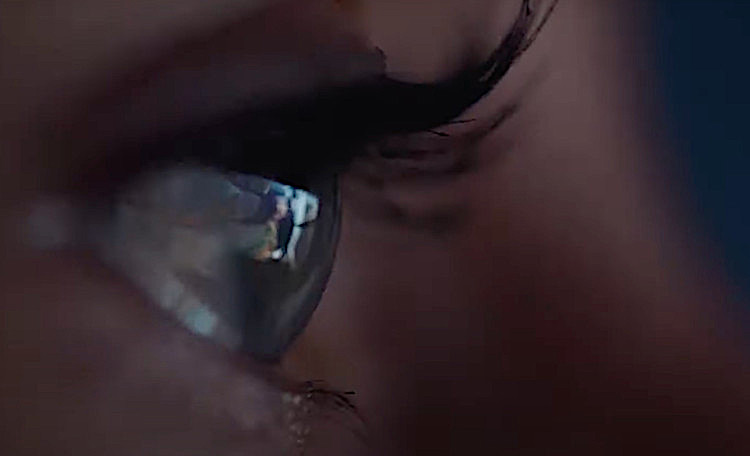Blue light is a term that you’ve probably heard a lot of during the last few years, and for good reason!
The obvious being that technology is getting more and more integrated in our lives, and blue light exposure is an inseparable part of being surrounded by electronic screens and other blue light emitting devices, such are your mobile phone and tablet.

However, digital devices aren’t the only offenders when it comes to blue light. Even everyday activities in the sun are an environment where you have blue light exposure.
Blue light is actually emanating from the sun, as it’s made of high-energy light waves, so it can cause you eye strain even without artificial sources present.
While there is no connection that there could be any long-term harmful effects or risk to humans, we are all aware of the day-to-day impact blue light can have on our well-being.
Eye fatigue, eye strain, and dry eyes are the most common effects that people complain about according to research, and while these are most easily treated with things like eye drops, headaches are not much less common.
Treating headaches and migraine attacks that appear can be a bit more challenging, so below you will find a bit more information about these conditions.
Blue Light Headache Symptoms & Other Side Effects
Blue light headaches are not as simple as just feeling tension or pounding in your head. Besides the headache pain that is the most frequent symptom, people also suffer from:
- Light sensitivity
- Eye inflammation
- Eye strain
- Blurred vision
- Shoulder pain
- Neck pain
- Dry eyes
- Pain behind the eyes
This type of headache is often compared to migraine attacks, and many migraine sufferers have reported that exposure to blue light can trigger migraine attacks.
So, if you are one of those people keep that in mind when you’re exposed to blue light waves.
Blue Light Headache Location
When it comes to the exact location of the pain, most people seem to experience throbbing pain behind their eyes, but it’s also not uncommon to feel pulsating pain that spreads across the whole head.

But, because blue light is acquired through the sensors in your eyes, the pain is definitely mostly found behind the eyes with extreme cases of light sensitivity.
If you are already prone to migraines, then you will most likely experience blue light headaches the same way you experience migraine headaches.
What Do Blue Light Headaches Feel Like?
A blue light headache is a tension-type headache, so that would be the main indicator of how it might feel if you experience this.
Also, you can expect to feel migraine photophobia, or severe sensitivity to light.
The pain that might appear is mostly pulsating, and people have reported feeling it mostly behind their eyes, or between the eyebrows.
If you’ve been in front of a computer screen for a long time, and start to feel eye strain (also known as digital eye strain) that soon gets accompanied by headache pain, then you’re most likely dealing with blue light-induced migraine headaches.
So pay attention in case you have a mixture of some of these symptoms, as those details can be crucial when seeking diagnosis or treatment.
Other Blue Light Sensitivity Symptoms
While blue light affects mostly symptoms related to headache pain and digital eye strain, there are some other symptoms and potential health conditions that people have complained about.
Researchers found implications that blue light is connected to several other conditions:
Skin Damage
It is widely known that being exposed to UVA and UVB rays from the sun can cause skin damage as well as increase the chances of skin cancer.
A study from 2015 has shown indications that blue light wave exposure decreases antioxidants found on the skin, which means that the number of free radicals on the skin has been increased.
In general, the lack of antioxidants can lead to premature aging and wrinkles, but in this case, there might be chances of more serious skin damage.
Disruption To Daily Sleep
As many migraine sufferers know, intense headaches are certain to disrupt your sleep. Often, this results in a lack of sleep that will further intensify your headaches, placing you in a vicious circle of pain and sleep deprivation.

Even if you don’t chronically suffer from having a migraine, this cycle is probably not unknown territory to you, so this symptom is no surprise.
How Do You Get Rid Of A Blue Light Headache?
There are several ways to reduce the impact of blue light headaches or even rid of them completely.
Here we discuss 4 ways you can try to alleviate the pain:
1. The 20/20/20 Method For Eye Rest
This is a simple method that is often used by people who work in environments with a lot of artificial blue light.
While you’re working in front of computer screens, try to do the following:
- Make a break every 20 minutes
- Find an object 20 feet away that you can focus on
- Look at it deeply for 20 seconds
This is designed to give your eyes a rest as well as relax you from intense focusing.
2. Change The Settings On Your Phone Or Computer
Many newer devices will have the option to change the lighting from blue light to warmer tones.
If you don’t find an option quite like that, it might be under the name “Nightshift”.

Even if your device doesn’t have the exact setting or the one it has doesn’t suit you, there is a variety of apps that you can download to get a warm filter on your screen.
This feature will switch your screen from emitting blue light to warmer tones, which is why the screen will often look more orange in color. Evidence suggests that these warmer colors can help the body maintain the hormone melatonin which is responsible for telling the body when it’s bed time!
3. Make Sure You’re Maintaining A Good Posture
When you’re working on a desk in front of a computer for a long time, it’s expected that you will forget to pay attention to your posture and bad posture could potentially make you even more prone to headaches.
Tips to maintain good posture would be:
- Keep your backrest at 90-degrees
- Adjust the armrest so you can comfortably relax your shoulders while typing
- Keep the monitor 20 to 26 inches from your face
- Place the monitor at eye level
4. Do Blue Light Glasses Help?
For many years, blue light glasses have been all over the market, promising that they will ease all troubles that you’ve been experiencing with blue light.
However, the response from people has been polarized.
While the studies have shown that they really do block blue light, not everyone experienced relief after buying them… there is even evidence where people have complained that blue-light-blocking glasses have increased their headaches and made them worse.
If you’ve worn glasses for a long time you would know that this can happen whenever you get a new pair of glasses of any kind, essentially due to the temple tips exerting pressure on the temple. So, be aware of this potential factor.
And while there are no studies to prove their efficacy, looking at anecdotal evidence shows that there is a chance that they help!
FAQ
Should I wear blue light blocking glasses outside?
No! Light coming from the sun is considered natural light that your eyes are designed to cope with and may even need. It does not contain an unnatural amount of blue light that your mobile devices usually emitting. Furthermore, you do not want to filter out any beneficial natural light from your eyes that the sun produces.
